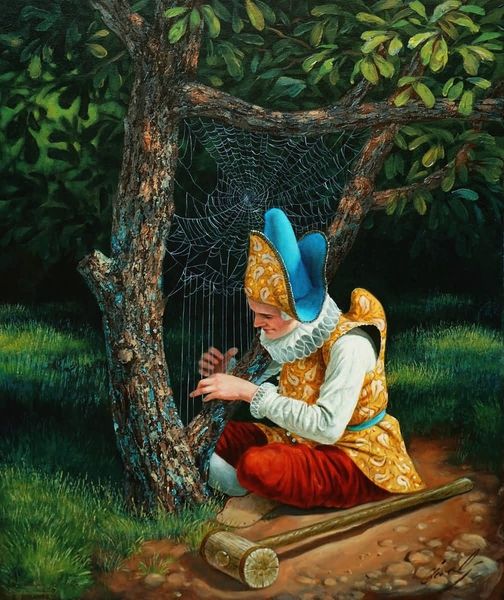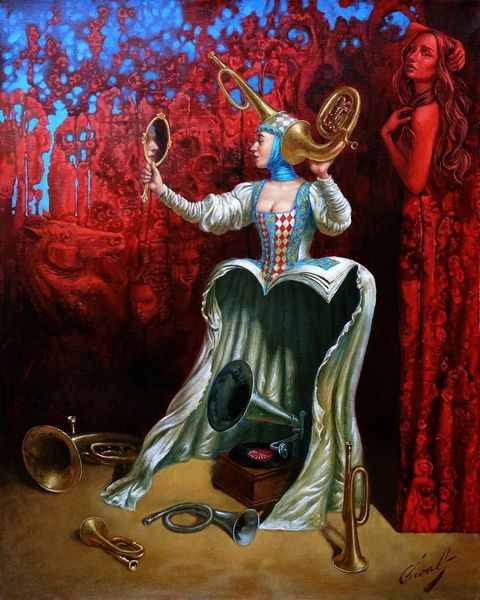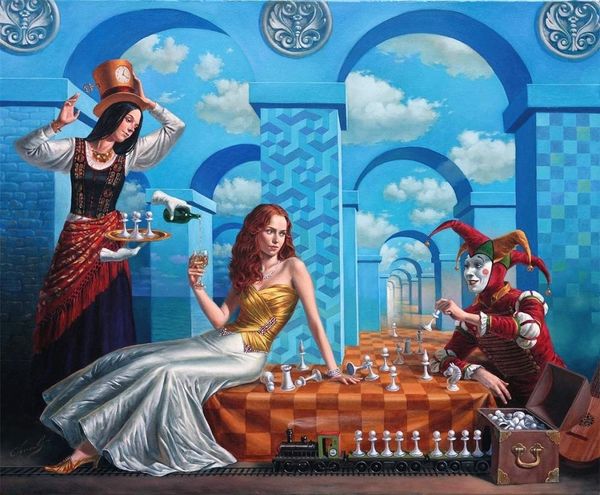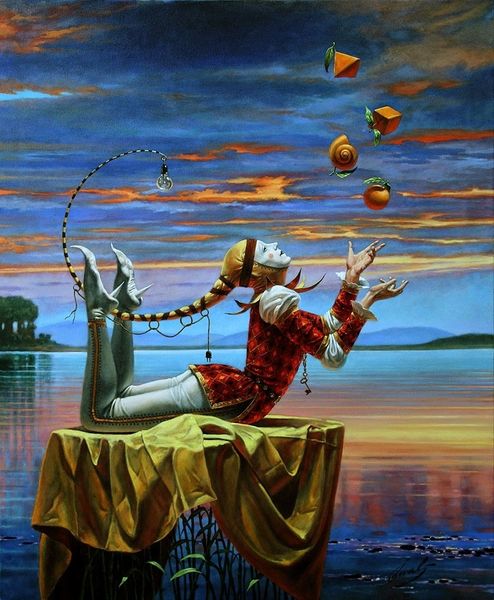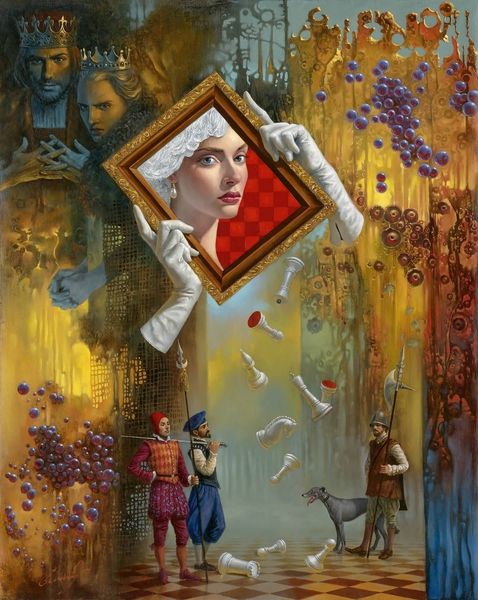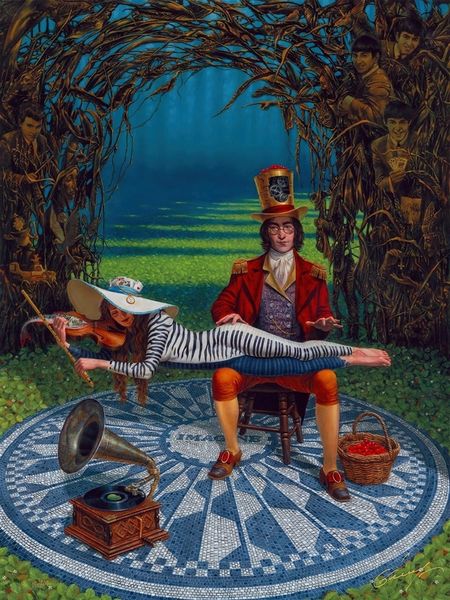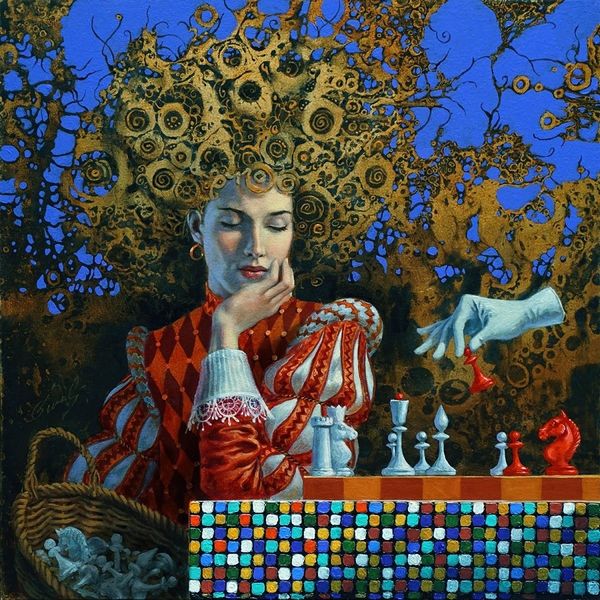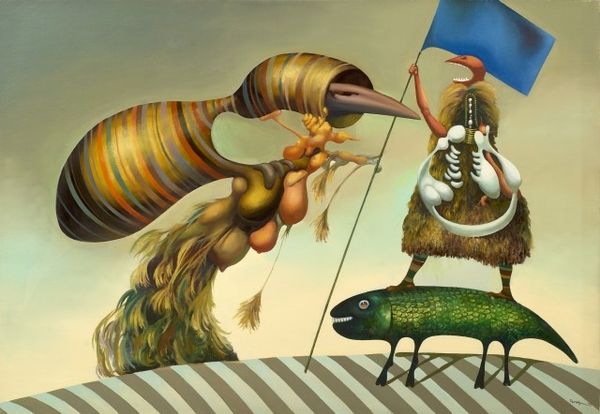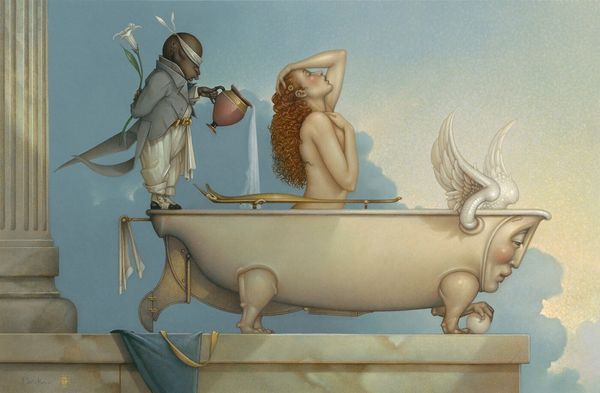
painting, acrylic-paint
#
gouache
#
painting
#
acrylic-paint
#
genre-painting
#
surrealist
#
surrealism
#
watercolor
#
realism
Copyright: Modern Artists: Artvee
Curator: At first glance, it’s a bewildering scene – playful, but unsettling. Editor: Indeed. What we have here is Michael Cheval's 2021 painting, "Felicity of Delusion." Cheval often blends realism with surrealism to create these thought-provoking narratives. The artwork, using acrylic paint and watercolor, features figures in what appears to be a game of chess played in a whimsical outdoor setting. Curator: Whimsical, yes, but the immediate impact is of disjointed labor. One figure is golfing and another is trying to make moves at a chess game using the golf putter. There's a tension between play and purpose that the composition seems to emphasize. And look closely, that golf club doesn’t seem quite like a conventional golf club. Editor: It challenges our traditional understanding of both leisure and skill. Note how Cheval employs figures in what appear to be traditional jester or Renaissance attire, setting them against the relatively flat and dreamlike landscape. The role of the jester, historically, was to mock and subvert social norms, perhaps reflecting Cheval's commentary on contemporary society through a historical lens. The painting can also be understood within the historical genre painting context. Curator: The jester-like costumes contribute a material history too. The process of creating the clothing, and the social status these roles would designate—someone labored extensively in design and craft, or in court performance, to present this persona. Then think about its availability, how only some can afford to labor and create works such as this acrylic and watercolor canvas, to participate in and produce the context. And I keep wondering—is there another golf ball to be found on the chessboard? Editor: Good point, the repetition hints at an attempt, an aimless task. The setting adds to the symbolic weight too. What could it mean to play these cerebral games, shadowed by a lone horse, right there on the horizon? Curator: So, not only a consideration of materials and physical labor, but mental labor too? Is that what Cheval intended by “Felicity of Delusion?" That the more that one strives towards success, the less sane their method and direction become? Editor: Perhaps Cheval invites us to question the games we play and the narratives we construct around them. In art, but also life. Curator: Thanks for helping unpack all of that. This has certainly given me much to consider regarding my own pursuits. Editor: Likewise. Cheval really manages to get under your skin and rethink some assumptions about society, art, and process.
Comments
No comments
Be the first to comment and join the conversation on the ultimate creative platform.
